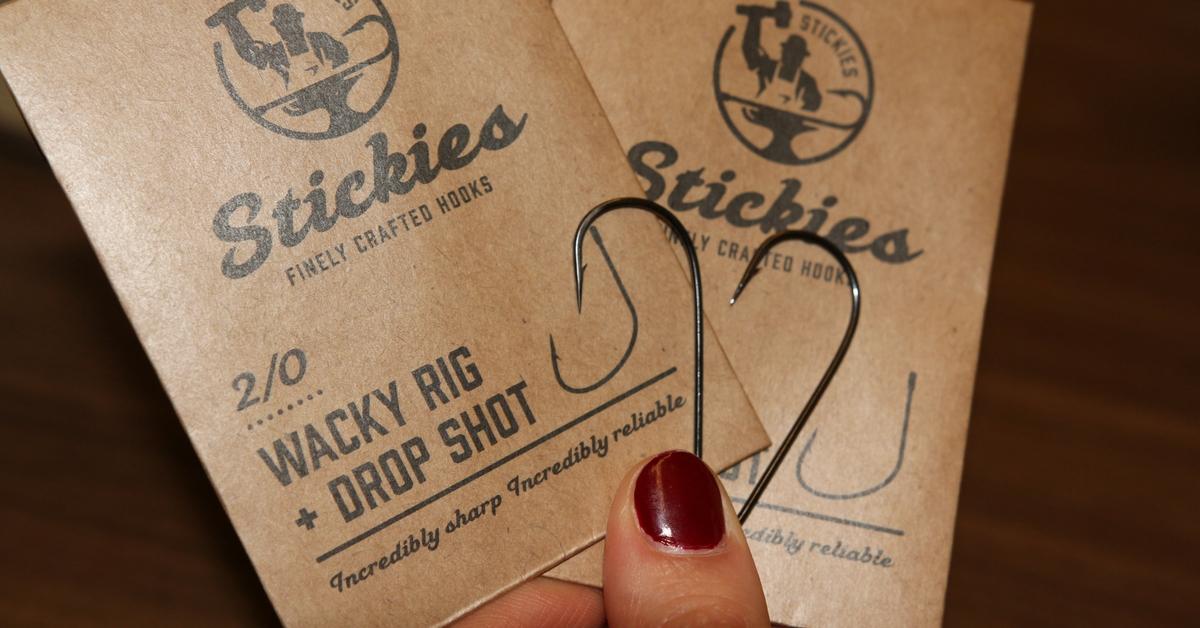Fishing Hooks 101: Matching The Proper Hook To Your Rig
Choosing the right fishing hooks has become a multiple-choice quiz, thanks to today's vast array of lures and bass fishing techniques. Gone are the days when you tied on the first hook you found in your tackle box. Now most anglers prefer a different style of hook for each type of lure and fishing application.
One of the main features to consider when buying a hook are sharpness and how well the hook retains sharpness. You can quickly tell how sharp a hook is by laying it on your fingernail and pulling it. If it slides on your fingernail, it's not sharp.
Stay Sharp
Sharpness can be attributed to the type of point on the hook. Some fishing hooks have cutting or spade-shaped points, which have both good and bad qualities. A cutting point grabs quickly, and as it penetrates the slice of the cutting edge through the toughest part of a bass' mouth for a solid hook set. The potential drawback to this type of hook, though, is after it penetrates, the hook leaves a bigger hole in the bass' flesh which could cause the hook to fall out when the fish tries to shake loose. Conical tip hooks leave smaller tears in the fish and hold better than cutting point hooks.
The thickness of the wire or metal is another key consideration when selecting hooks. For most bass fishing applications, you will be dealing with light or standard wire compositions. Standard wire works best for heavy-duty situations such as pitching and flipping into thick cover. But it also requires a stronger hook set than lighter wire hooks. Light wire fishing hooks are best for finesse fishing with thin line.
Hooks also come in a variety of finishes. Most hooks feature the standard bronze finish, but other popular finishes include blue and black nickel, black chrome, gold, and red. Teflon and other slick coatings are applied to hooks for easier hook penetration.
A hook's pattern determines its size, which causes hook dimensions to vary to some extent. The size of the hook is given in terms of the width of the hook's gap, the distance between the point and the shaft measured in aughts.
Bass Fishing Hook Sizes
Hook sizes for most bass fishing applications range in size from 1/0 to 6/0. Another important hook dimension is its throat or bite, the area between the point and hook bend. Any hook with generous dimensions in its gap and throat creates deeper penetration of the point and better holding power because the weight of the fish rides high up on the center of the hook's bend.
Since hook companies have different hook size designations, you should inspect hooks carefully before buying them to determine if it has a wide enough gap for your style of fishing. Usually, the bigger the gap, the better when using larger soft plastics such as Flukes, creature baits, and swimbaits. A smaller gap hook has the advantage of offering less resistance when a bass inhales a plastic bait, but most anglers prefer extra-wide gap models.
Improvements in the hook's shank design have been made throughout the years. The straight-shank or Sproat style has always been a popular worm hook because it allows a Texas-rigged worm to lie straight. Offset shank models offer more bite between the hook eye and point to produce solid hooksets. These models have long shanks, which give the hook more gap and position the hook point well to the rear of baits enabling you to catch more short-striking bass. Cam-action hooks such as the Tru-Turn models feature shanks with substantial bends. The bent shaft allows the hook to rotate in the fish's mouth to deliver a sure hook set. Octopus-style hooks featuring a round shank and bend are best for drop-shotting small soft plastics.
Soft Plastic Bass Hooks
Selecting the right hook for each type of lure can be puzzling with all these designs and features. Try offset hooks with wide gaps for worm fishing. Use 3/0 hooks mainly for 6- to 8-inch worms, except scale down to 2/0 hooks for smaller Senkos or finesse worms. Upgrade to 5/0 and 6/0 hooks for throwing 10- to 12-inch plastic worms.
Less is better when matching a hook with floating worms or Senko style baits, so try a 1/0 light wire hook with either an offset or straight shank. The light-wire hook is necessary to get the most action out of the worm.
Fishing for bass with live bait also requires different hook styles. The Kahle hook is ideal for shiners and crayfish because it offers a wider gap clearance for bass to easily take the bait. A worm hook with two barbs near the hook eye works best for holding nightcrawlers on the hook better.
Shopping for fishing hooks has gotten harder, but getting a good hookset into a bass becomes much easier if you make the right choices.
Updated March 28th, 2022 at 4:03 AM CT


